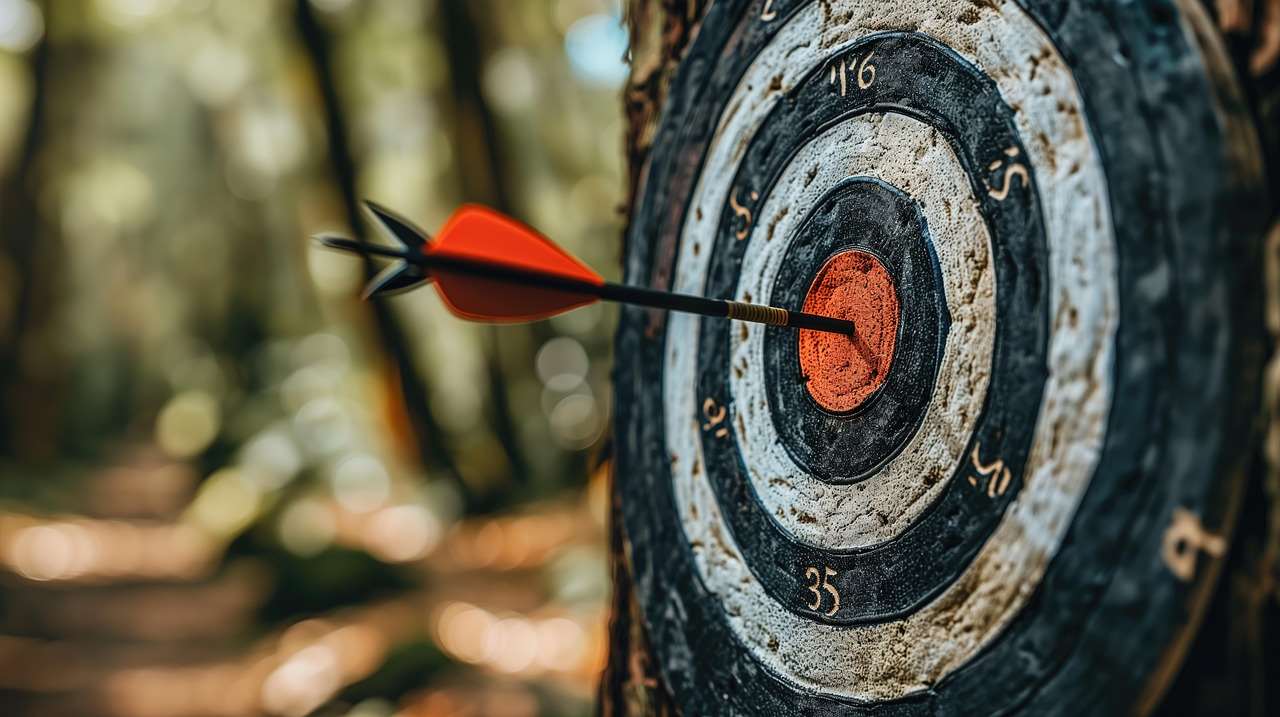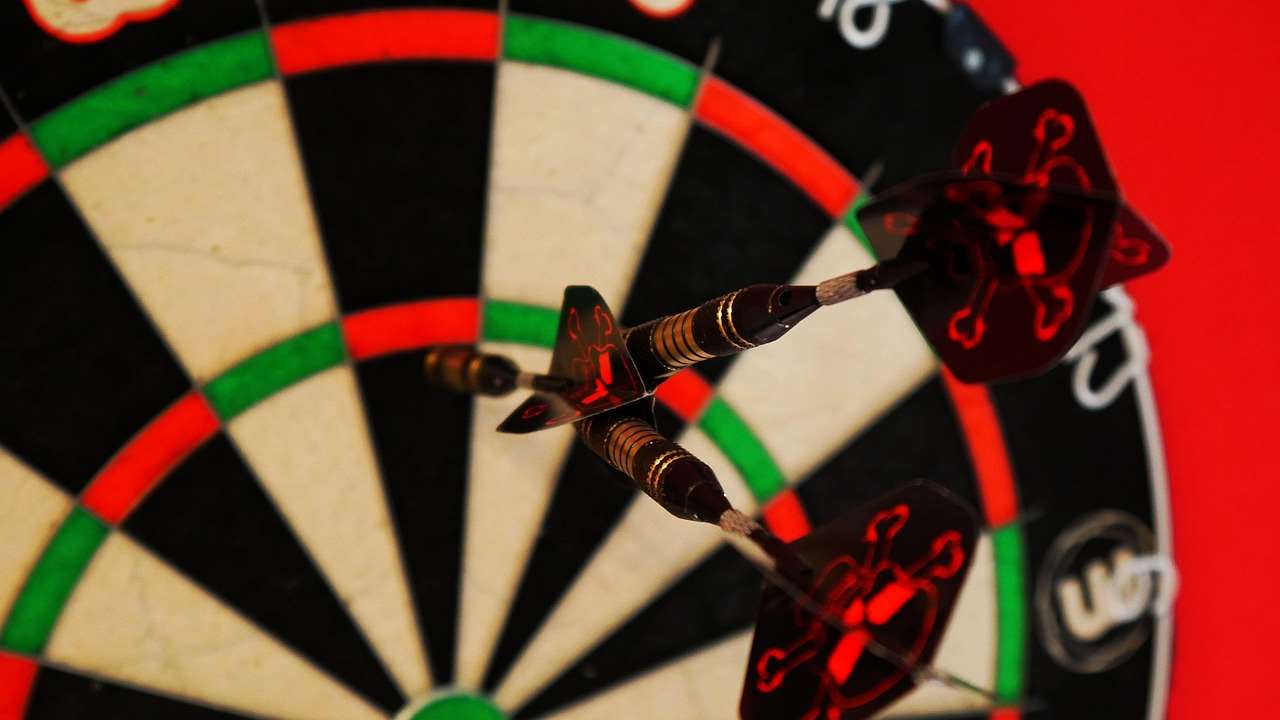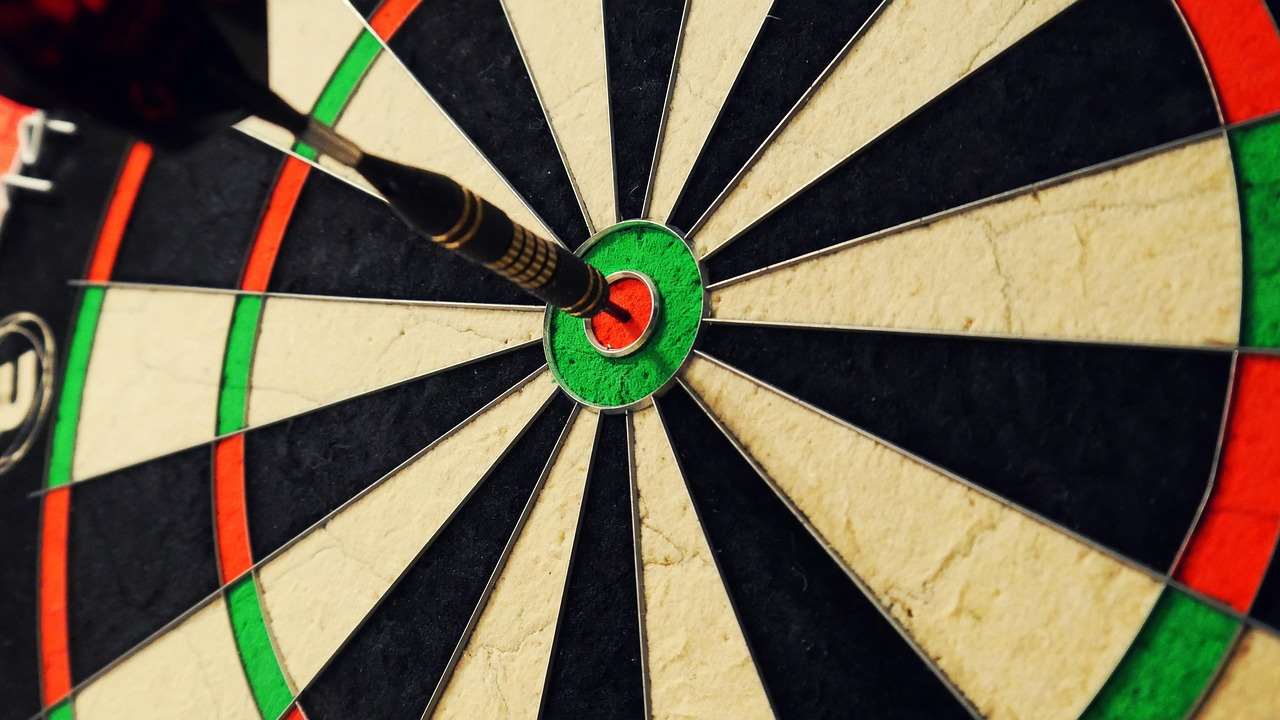The **impact of popular culture on darts** is undeniable, transforming it from a niche pub game into a televised sporting spectacle and a more accessible hobby for many. This article explores how TV shows, celebrity endorsements, and media coverage have reshaped the perception and popularity of darts.
⚠️ Still Using Pen & Paper (Of een schoolbord)?! ⚠️
Stap in de toekomst! De Dart Teller -app behandelt alle scoren, stelt kassa voor, en volgt uw statistieken automatisch. It's easier than you think!
Probeer de Smart Dart Teller -app gratis!Klaar voor een upgrade? Klik hierboven!
The Rise of Darts on Television
Before the advent of televised darts, the sport was largely confined to pubs and social clubs. Echter, the arrival of professional darts on television screens in the 1970s and 1980s marked a turning point. Shows like “Bullseye” En “Indoor League” brought the game into living rooms across the UK, showcasing the skill, tension, and characters that made darts compelling viewing. These early broadcasts, although relatively simple in production, captured the essence of the game and introduced it to a much wider audience.

De broadcasts of professional tournaments like the World Championships and the World Masters further solidified darts’ place in popular culture. Commentators like Sid Waddell, with their flamboyant style and memorable catchphrases, added to the entertainment value and helped to create household names out of players like Eric Bristow and Phil Taylor. The intense rivalries, dramatic finishes, and sheer unpredictability of darts proved to be a winning formula for television audiences.
De “Bullseye” Effect
No discussion of the impact of popular culture on darts is complete without mentioning “Bullseye.” This ITV quiz show, which ran from 1981 naar 1995, combined darts with general knowledge questions, offering contestants the chance to win prizes based on their dart-throwing accuracy. “Bullseye” was a massive hit, attracting millions of viewers and introducing darts to a completely new demographic. The show’s catchphrases, zoals “Super, smashing, great!” En “You can’t beat a bit of bully,” became ingrained in British vernacular. It is possible to promote local darts and attract new players with some similar fun events.
Celebrity Endorsements and Player Personas
As darts gained popularity, players like Phil Taylor and Eric Bristow transcended the sport to become celebrities in their own right. Their successes on the oche led to endorsement deals with major brands, appearances on television shows, and even autobiographies. These players, often characterized by their distinctive personalities and working-class backgrounds, resonated with the public and helped to break down the traditional stereotypes associated with darts.
The Rise of the Darts Superstar
Phil “The Power” Taylor, in particular, became a global icon. His incredible talent, intense focus, and relentless pursuit of perfection made him a dominant force in the sport for over two decades. Taylor’s success not only elevated his own profile but also raised the profile of darts as a whole. His rivalries with players like Raymond van Barneveld captivated audiences and drew in new fans from around the world.

Verder, modern players are increasingly aware of their brand and cultivate their online presence through social media. They interact with fans, share behind-the-scenes glimpses of their lives, and use their platforms to promote the sport. This increased accessibility and engagement helps to create a stronger connection between players and fans, further fueling the growth of darts.
The Democratization of Darts
One of the most significant aspects of the **impact of popular culture on darts** is the **democratization of the sport**. As darts became more visible and accessible, it attracted a wider range of participants. The increased popularity led to the establishment of more darts leagues and clubs, providing opportunities for people of all ages and abilities to get involved. The availability of affordable dartboards and equipment also made it easier for individuals to practice and improve their game at home. Setting Up A Darts Club is a great way to get involved in the community.
Darts as a Social Activity
Beyond the professional level, darts has always been a popular social activity. Pubs and clubs have long been hubs for dart players, providing a relaxed and friendly environment for people to come together and enjoy a game. The social aspect of darts is particularly important for older generations, offering a sense of community and belonging. Darts Culture And Community Guide details even further the importance of community.

Echter, the **impact of popular culture on darts** extends beyond traditional pub settings. The rise of online darts platforms has allowed players to compete against opponents from all over the world, regardless of their location or skill level. These platforms provide a convenient and accessible way for people to engage with the sport, further broadening its appeal. Building Local Darts League Club Guide can help promote more community involvement.
The Media Landscape and Darts Coverage
The media landscape has played a crucial role in shaping the **impact of popular culture on darts**. The increasing coverage of darts in newspapers, magazines, and online publications has helped to raise awareness of the sport and its key figures. Television channels like Sky Sports and the BBC have invested heavily in darts coverage, broadcasting major tournaments live and providing in-depth analysis and commentary.
The Power of Streaming
The advent of streaming services has further expanded the reach of darts. Platforms like DAZN and ESPN+ offer live and on-demand coverage of darts events, making it easier for fans around the world to follow their favorite players and tournaments. Social media platforms like Twitter and Facebook have also become important channels for darts fans to connect with each other and share their passion for the sport. Recruiting Members Darts League Club and using these platforms is crucial for club growth.

The way darts is presented in the media has also evolved over time. Modern broadcasts often feature high-definition cameras, slow-motion replays, and sophisticated graphics, enhancing the viewing experience and making the sport more visually appealing. The use of data analytics and statistical analysis has also become increasingly common, providing viewers with deeper insights into the game.
Darts in the Digital Age
The **digital age** has had a profound **impact of popular culture on darts**. Online forums, social media groups, and dedicated websites provide platforms for fans to discuss the sport, share tips and advice, and connect with other enthusiasts. Virtual darts leagues and tournaments allow players to compete against opponents from around the world, regardless of their location or skill level. These online communities foster a sense of camaraderie and belonging, further strengthening the darts community. Learning How To Start A Darts League can bring like-minded people together.
De toekomst van darts: A Blend of Tradition and Innovation
The future of darts looks bright, with the sport continuing to grow in popularity and reach. A key element will be continued innovation, as Darts Club Administration Guide dictates, specifically in technology and broadcasting. As more young players enter the professional ranks, bringing with them new skills and perspectives, darts will likely continue to evolve and adapt to the changing media landscape. The challenge for the sport’s governing bodies will be to balance the need to modernize and attract new audiences with the importance of preserving the traditions and values that have made darts so popular for so long.

The Enduring Appeal Of Darts
Uiteindelijk, the enduring appeal of darts lies in its simplicity and accessibility. It’s a game that can be enjoyed by people of all ages and abilities, regardless of their background or experience. Whether played in a pub with friends or watched on television with millions of other fans, darts offers a unique blend of skill, competition, and entertainment. The **impact of popular culture on darts** has undoubtedly played a significant role in shaping the sport’s modern identity, but its underlying appeal remains as strong as ever.
Conclusie
Conclusie, the **impact of popular culture on darts** is multifaceted and profound. From the early days of televised darts on shows like “Bullseye” to the rise of celebrity players like Phil Taylor and the proliferation of online darts platforms, popular culture has shaped the perception, accessibility, and popularity of the sport. The media coverage, celebrity endorsements, and social media presence have all contributed to darts’ transformation from a niche pub game into a global phenomenon. The key takeaways are: increased visibility, wider accessibility, and a shift in the sport’s image. The integration of technology and the evolution of media landscapes promise an even brighter future for darts. Ready to throw some darts yourself? Find a local darts club or organize your own game night!
Hoi, Ik ben Dieter, En ik heb Dartcounter gemaakt (Dartcounterapp.com). Mijn motivatie was geen darts -expert - helemaal tegenovergestelde! Toen ik voor het eerst begon te spelen, Ik hield van het spel, maar vond het moeilijk en afleidend om nauwkeurige scores te houden en statistieken te volgen.
Ik dacht dat ik niet de enige kon zijn die hiermee worstelde. Dus, Ik besloot om een oplossing te bouwen: een eenvoudig te gebruiken applicatie die iedereen, Ongeacht hun ervaringsniveau, zou kunnen gebruiken om moeiteloos te scoren.
Mijn doel voor Dartcounter was eenvoudig: Laat de app de nummers afhandelen - het scoren, de gemiddelden, de statistieken, Zelfs checkout suggesties - zodat spelers puur kunnen richten op hun worp en genieten van het spel. Het begon als een manier om het probleem van mijn eigen beginners op te lossen, En ik ben heel blij dat het is uitgegroeid tot een nuttig hulpmiddel voor de bredere darts -community.